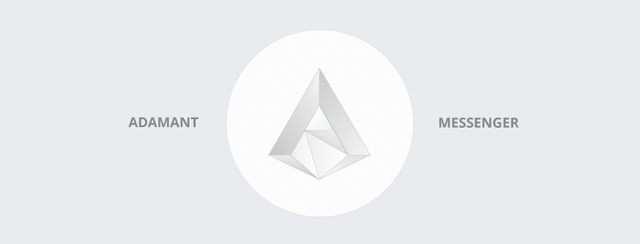Part 1: Adamant - How Adamant will allow User to chat and send money securely using the Blockchain

Introduction to ADAMANT
Messenger apps and services have become an integral part of the day to day life of people, be it an individual or a company. There are many instances that are in the open now, wherein the privacy of the user has been breached by companies which own the applications such as messengers.
ADAMANT tries to address this issue. ADAMANT uses the Blockchain – based system for data and message transfers along with an integrated payment system. We all know that Blockchain concept proves to be robust and ensures data security along with maintaining the anonymity. This means that unlike all other centralized message transfer systems it is almost impossible to associate a message history to a specific person – due to the absence of credentials being used by the system. Users don’t need to enter their cell phone numbers, emails or social accounts, payment details etc.
The Technical Solution behind ADAMANT
The System’s architecture
Adamant is a fully decentralized system that is based on Delegated Proof-of-Stake Consensus (DPoS) algorithm. (DPoS leverages the power of stakeholder approval voting to resolve consensus issues in a fair and democratic way. All network parameters, from fee schedules to block intervals and transaction sizes, can be tuned via elected delegates)
ADAMANT system consists of two types of nodes:
FULL NODES that contain the entire blockchain database and which can participate in new blocks forging
LIGHT-CLIENTS which run full data encryption on their side before further transferring to the blockchain.
All blockchain operations are carried out by the full nodes, with which light-clients interconnect through the HTTPS protocol (End-to-End encryption), using a certain API to transfer all their data in JSON format.
A full node is using the following basis:
● OS Linux Server (Ubuntu). Installation on other platforms is also possible through the Docker application packages;
● Node.JS Application Server;
● PostgreSQL Server for storing the blockchain.
Light clients do make use of the following technologies:
● Progressive Web App (PWA) — a web application for the modern browsers;
● HTML5, JS, CSS, Vue — program languages, and frameworks for the web;
● A full node utilization through the special API protocol.
All of the network nodes do use Peer-to-Peer scheme over the HTTPS protocol for their interconnection.
Lisk code for ADAMANT
Initially, proof-of-work(PoW) system was considered for the project. However, PoW is not compatible in the long term with messengers, as nobody would like to wait for long periods of time to send and receive messages. Also, it’s maintenance cost is high and with the growth in participants amount the transactions fee would rise quickly too.
All modern use cases of the Ethereum blockchain are also not suitable for maintaining the ADAMANT network. This is because of the relatively high value of “gas”(transactions’ fee), that is used for every Ethereum transaction, including all message transfers.
The above reasons resulted in ADAMANT being built on an independent blockchain. Thus the transactions’ costs could be low enough to operate the whole network and they could also be adjusted based on the future rising token price. Lisk’s codebase supported these needs and hence is used for the realization of the server part and the blockchain itself. The ADAMANT architecture is flexible enough to allow changes to transactions’ fee, as and when needed.
ADAMANT TRANSACTIONS
Each block includes a variable amount of transactions. An amount of 6 to 10 block confirmations are needed, in order for the block to be approved. This is, however, important for token transactions and document transfers. All the messages are sent after one confirmation.
Below is the list of the network’s transaction types:
- Direct token transfer
- Message transfer
- Profile updates: like saving a contact or user settings directly in the blockchain
- Profile picture Upload
- Creating a Group Chat
- Closing a particular chat (chat history hiding)
- Document transfer (saved in the blockchain)
- Signing a document
- Delegate registration
- Voting for delegate.
All transactions do require commission payment (a fee) for their execution. All such payments are being shared between active delegates as network maintenance cost.
How the ADM token is forged and the infrastructure maintained will be explained in detail in the second part of this article.
For more information on the ADAMANT Messenger check out their Website.